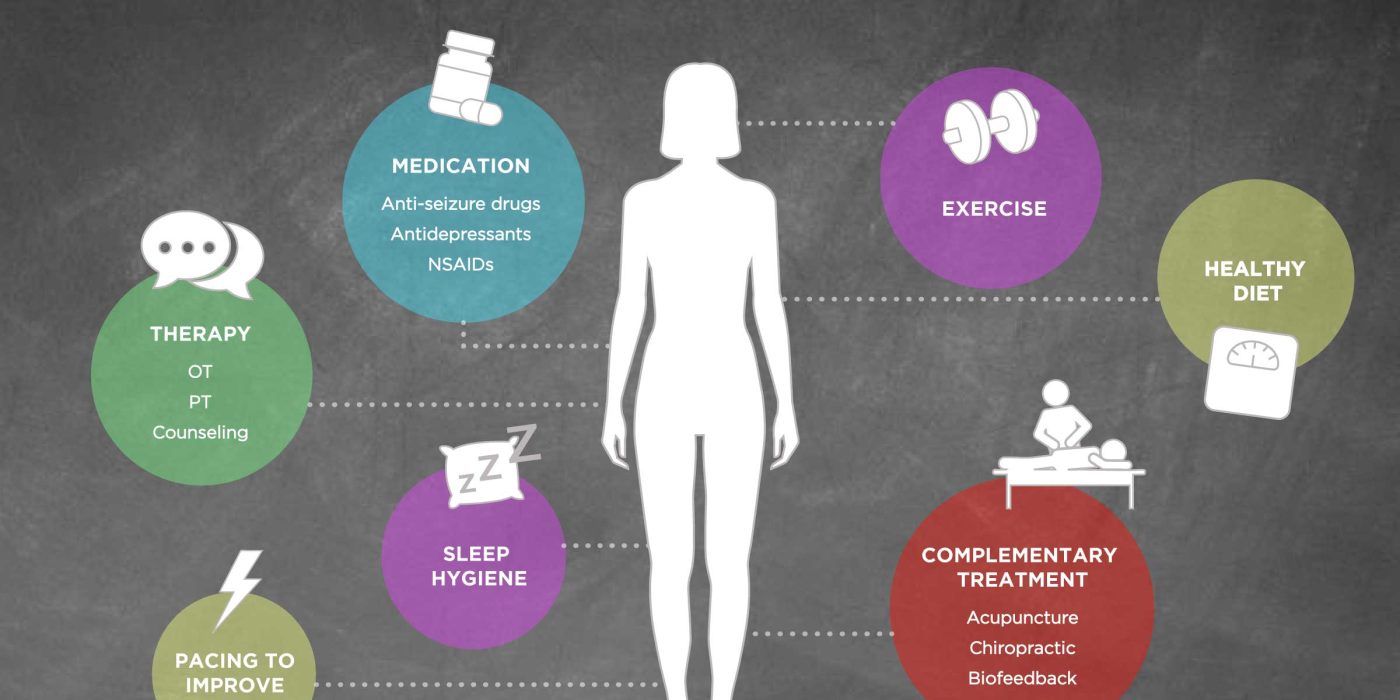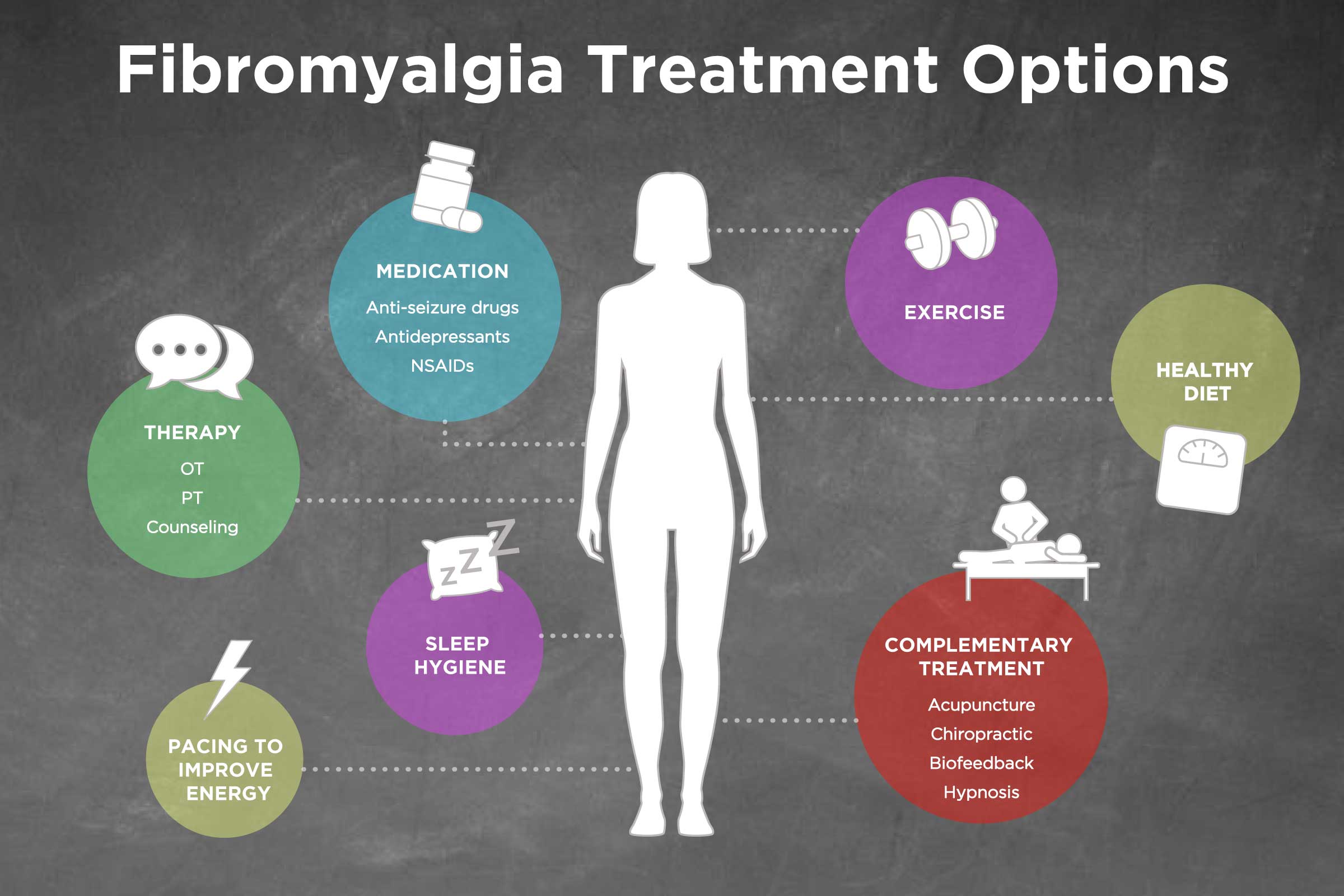Dealing with the constant pain and discomfort of fibromyalgia can be incredibly challenging. If you or someone you know is living with this condition, you’re probably wondering, “What are some pain relief options for fibromyalgia?” Well, you’ve come to the right place! In this article, we’ll explore various strategies and treatments that can help alleviate the symptoms of fibromyalgia, allowing you to live a more comfortable and fulfilling life.
When it comes to managing fibromyalgia pain, it’s important to remember that what works for one person may not work for another. It’s a trial-and-error process, but don’t lose hope! From medications to lifestyle changes, there are plenty of options to explore. In this article, we’ll dive into the world of pain relief for fibromyalgia, discussing the effectiveness of different treatments and providing you with valuable insights to help you make informed decisions. So let’s get started and discover the relief you’ve been searching for!
Fibromyalgia is a chronic pain condition that can be challenging to manage. Fortunately, there are several pain relief options available. Some common approaches include medications such as pain relievers, antidepressants, and anti-seizure drugs. Physical therapy, exercise, and relaxation techniques like yoga and meditation can also help reduce pain. Additionally, alternative therapies like acupuncture, massage, and chiropractic care may provide relief for some individuals. It’s important to work with a healthcare professional to develop a personalized treatment plan.
What are Some Pain Relief Options for Fibromyalgia?
Fibromyalgia is a chronic condition characterized by widespread pain, fatigue, and tenderness in the muscles and soft tissues. Managing the pain associated with fibromyalgia can be challenging, but there are several pain relief options available. In this article, we will explore some of the most effective strategies for alleviating fibromyalgia pain.
1. Medications
When it comes to managing fibromyalgia pain, medications can play a crucial role. There are several types of medications that may be prescribed to help alleviate pain and improve sleep in individuals with fibromyalgia. One common class of drugs used for fibromyalgia is antidepressants, such as selective serotonin reuptake inhibitors (SSRIs) and serotonin-norepinephrine reuptake inhibitors (SNRIs). These medications not only help with mood regulation but also have pain-relieving properties. Other medications that may be prescribed include muscle relaxants, pain relievers, and sleep aids.
It’s important to note that medication should always be used as part of a comprehensive treatment plan for fibromyalgia, which may include other strategies such as exercise, physical therapy, and stress management techniques. It’s essential to work closely with a healthcare provider to determine the most appropriate medication regimen for your specific needs.
a. Antidepressants
Antidepressants are commonly prescribed for fibromyalgia because they can help regulate mood and relieve pain. SSRIs, such as fluoxetine (Prozac) and sertraline (Zoloft), and SNRIs, such as duloxetine (Cymbalta) and venlafaxine (Effexor XR), are often used. These medications work by increasing the levels of certain neurotransmitters in the brain, which can help reduce pain signals and improve mood. It may take several weeks for the full effects of these medications to be felt, so it’s important to be patient and consistent with your medication regimen.
In addition to SSRIs and SNRIs, tricyclic antidepressants (TCAs) can also be used to manage fibromyalgia pain. TCAs, such as amitriptyline (Elavil) and nortriptyline (Pamelor), have been shown to help reduce pain, improve sleep, and alleviate other symptoms associated with fibromyalgia. These medications work by blocking the reuptake of certain neurotransmitters, thereby increasing their availability in the brain.
b. Muscle Relaxants
Muscle relaxants may also be prescribed to individuals with fibromyalgia to help alleviate muscle pain and stiffness. These medications work by reducing muscle spasms and promoting relaxation. Commonly prescribed muscle relaxants include cyclobenzaprine (Flexeril) and tizanidine (Zanaflex). It’s important to note that muscle relaxants can cause drowsiness, so it’s recommended to take them at night or when you have time to rest.
In addition to prescription medications, over-the-counter pain relievers such as acetaminophen (Tylenol) and nonsteroidal anti-inflammatory drugs (NSAIDs) like ibuprofen (Advil, Motrin) can also provide temporary relief from fibromyalgia pain. However, it’s important to use these medications cautiously and follow the recommended dosage guidelines to avoid potential side effects.
2. Physical Therapy
Physical therapy is a non-pharmacological approach to managing fibromyalgia pain that focuses on improving strength, flexibility, and overall physical function. A physical therapist can create a personalized exercise program tailored to your specific needs and abilities. This may include stretching exercises, low-impact aerobic activities, and strength training exercises. Physical therapy can help reduce pain, improve sleep, and enhance overall quality of life for individuals with fibromyalgia.
In addition to exercise, physical therapists may also use other techniques such as heat or cold therapy, ultrasound, and electrical stimulation to help alleviate pain and promote healing. These modalities can help reduce inflammation, improve circulation, and relax tense muscles.
a. Exercise
Exercise is an essential component of any fibromyalgia treatment plan. Regular physical activity can help reduce pain, improve sleep, boost mood, and increase overall physical function. Low-impact aerobic activities, such as walking, swimming, and cycling, are often recommended for individuals with fibromyalgia. These activities can help improve cardiovascular fitness without putting excessive stress on the joints and muscles.
Strength training exercises are also beneficial for individuals with fibromyalgia. Building muscle strength can help support the joints, improve overall physical function, and reduce pain. It’s important to start with light weights and gradually increase the intensity and duration of your strength training routine under the guidance of a physical therapist.
b. Other Physical Therapy Techniques
In addition to exercise, physical therapists may use other techniques to help manage fibromyalgia pain. Heat therapy, such as warm water baths or heating pads, can help relax tense muscles and reduce pain. Cold therapy, such as ice packs or cold compresses, can help reduce inflammation and numb painful areas. Ultrasound therapy uses high-frequency sound waves to promote healing and reduce pain. Electrical stimulation, such as transcutaneous electrical nerve stimulation (TENS), can help block pain signals and provide temporary relief.
It’s important to work closely with a physical therapist to determine the most appropriate treatment approach for your specific needs. They can help you develop a personalized exercise program and provide guidance on other techniques that may be beneficial for managing fibromyalgia pain.
3. Alternative Therapies
In addition to medications and physical therapy, there are several alternative therapies that may be beneficial for managing fibromyalgia pain. These therapies focus on holistic approaches to pain relief and promote overall well-being. Some common alternative therapies for fibromyalgia include:
– Massage therapy: Massage can help relax tense muscles, improve circulation, and reduce pain. It can also promote relaxation and improve sleep.
– Acupuncture: Acupuncture involves the insertion of thin needles into specific points on the body to help balance energy flow and alleviate pain. It has been shown to be effective in reducing fibromyalgia pain.
– Yoga and Tai Chi: These mind-body practices combine gentle movements, deep breathing, and meditation to promote relaxation, reduce pain, and improve physical function.
– Mindfulness meditation: Mindfulness meditation involves focusing on the present moment and accepting it without judgment. It can help reduce stress, improve mood, and alleviate pain.
– Herbal supplements: Some herbal supplements, such as turmeric, ginger, and omega-3 fatty acids, have been shown to have anti-inflammatory properties and may help reduce fibromyalgia pain.
It’s important to note that alternative therapies should be used as part of a comprehensive treatment plan and in consultation with a healthcare provider. They may not be suitable for everyone, and it’s essential to discuss any potential risks or interactions with your healthcare provider before starting any alternative therapy.
a. Massage Therapy
Massage therapy is a popular alternative therapy for managing fibromyalgia pain. It involves the manipulation of soft tissues to promote relaxation, improve circulation, and reduce pain. Massage can help relax tense muscles, release trigger points, and improve range of motion. It can also promote the release of endorphins, which are natural pain relievers.
There are several different types of massage that may be beneficial for individuals with fibromyalgia, including Swedish massage, deep tissue massage, and myofascial release. It’s important to work with a trained and experienced massage therapist who is familiar with fibromyalgia and its specific challenges.
b. Acupuncture
Acupuncture is an ancient Chinese practice that involves the insertion of thin needles into specific points on the body to help balance energy flow and alleviate pain. It has been shown to be effective in reducing fibromyalgia pain and improving overall well-being. Acupuncture may help stimulate the release of endorphins, promote relaxation, and reduce inflammation.
During an acupuncture session, the practitioner will insert the needles at specific points on the body, depending on the individual’s symptoms and needs. The needles are typically left in place for a short period, and the session is typically relaxing and painless.
In conclusion, there are several pain relief options available for individuals with fibromyalgia. These options include medications, physical therapy, and alternative therapies. It’s important to work closely with a healthcare provider to develop a personalized treatment plan that addresses your specific needs. By incorporating a combination of strategies, you can effectively manage fibromyalgia pain and improve your overall quality of life.
Key Takeaways: What are some pain relief options for fibromyalgia?
- Exercise regularly to help reduce pain and improve overall well-being.
- Try different relaxation techniques, such as deep breathing or meditation, to calm the mind and ease fibromyalgia symptoms.
- Consider taking over-the-counter pain relievers, like acetaminophen or ibuprofen, to help manage fibromyalgia pain.
- Explore alternative therapies, such as acupuncture or massage therapy, which may provide relief from fibromyalgia symptoms.
- Work with a healthcare professional to develop a personalized treatment plan that may include prescription medications tailored to your specific needs.
Frequently Asked Questions
What causes fibromyalgia?
Fibromyalgia is a complex disorder that is not yet fully understood. However, research suggests that it may be triggered by a combination of genetic, environmental, and psychological factors. Some potential causes include abnormalities in the way the brain processes pain signals, imbalances in certain neurotransmitters, and a history of physical or emotional trauma.
It is important to note that fibromyalgia is not caused by inflammation or damage to the muscles or joints, as is the case with other types of arthritis. Instead, it is believed to involve abnormalities in the central nervous system that amplify pain signals throughout the body.
What are some non-medication pain relief options for fibromyalgia?
While medication can be helpful in managing fibromyalgia pain, there are also non-medication options that can provide relief. These include:
1. Physical therapy: Working with a physical therapist can help improve strength, flexibility, and overall function, which can reduce pain and improve quality of life.
2. Exercise: Regular exercise, such as walking, swimming, or cycling, can help reduce pain and improve sleep and mood. It is important to start slowly and gradually increase intensity to avoid overexertion.
3. Relaxation techniques: Practices such as deep breathing, meditation, and progressive muscle relaxation can help reduce stress and promote relaxation, which can in turn reduce pain.
4. Heat therapy: Applying heat to painful areas, such as with a heating pad or warm bath, can help relax muscles and alleviate pain.
5. Cognitive-behavioral therapy: This type of therapy focuses on changing negative thoughts and behaviors that contribute to pain and disability. It can help individuals develop coping skills and improve their overall well-being.
What are some medication options for fibromyalgia pain relief?
There are several medications that may be prescribed to help manage fibromyalgia pain. These include:
1. Analgesics: Over-the-counter pain relievers, such as acetaminophen or nonsteroidal anti-inflammatory drugs (NSAIDs), can help reduce mild to moderate pain.
2. Antidepressants: Certain antidepressant medications, such as duloxetine or amitriptyline, can help reduce pain and improve sleep and mood.
3. Anticonvulsants: Medications typically used to treat seizures, such as pregabalin or gabapentin, can also be effective in reducing fibromyalgia pain.
4. Muscle relaxants: These medications, such as cyclobenzaprine, can help relax muscles and reduce pain associated with fibromyalgia.
5. Topical creams or patches: Some individuals may find relief from using topical creams or patches that contain pain-relieving medications, such as lidocaine or capsaicin.
Are there any alternative therapies that can help with fibromyalgia pain relief?
While research on alternative therapies for fibromyalgia is limited, some individuals may find relief from trying these approaches:
1. Acupuncture: This ancient Chinese practice involves the insertion of thin needles into specific points on the body to help alleviate pain and promote healing.
2. Massage therapy: Therapeutic massage can help relax muscles, improve circulation, and reduce pain and stiffness.
3. Yoga and tai chi: These mind-body practices combine gentle movements, stretching, and deep breathing to improve flexibility, strength, and overall well-being.
4. Herbal supplements: Some individuals may find relief from certain herbal supplements, such as turmeric or ginger, but it is important to consult with a healthcare professional before trying any new supplement.
5. Mindfulness-based stress reduction: This practice involves paying attention to the present moment without judgment, which can help reduce stress and improve overall well-being.
How can lifestyle changes help with fibromyalgia pain relief?
Making certain lifestyle changes can be beneficial in managing fibromyalgia pain. Here are some strategies to consider:
1. Getting enough sleep: Establishing a regular sleep schedule and practicing good sleep hygiene can help improve sleep quality, which in turn can reduce pain and fatigue.
2. Eating a balanced diet: Consuming a nutritious diet that includes a variety of fruits, vegetables, whole grains, and lean proteins can help support overall health and well-being.
3. Managing stress: Stress can exacerbate fibromyalgia symptoms, so finding healthy ways to cope with stress, such as through relaxation techniques or engaging in enjoyable activities, is important.
4. Pacing activities: Avoiding overexertion and learning to pace activities can help prevent flare-ups and conserve energy.
5. Seeking support: Connecting with others who have fibromyalgia through support groups or online communities can provide valuable emotional support and practical tips for managing symptoms.
How to Treat Fibromyalgia
Final Thoughts: Finding Relief for Fibromyalgia Pain
Living with fibromyalgia can be incredibly challenging, especially when it comes to managing the chronic pain that accompanies this condition. Fortunately, there are various pain relief options available that can help improve the quality of life for individuals with fibromyalgia. From medication to alternative therapies, it’s important to explore different approaches and find what works best for you.
One of the most common pain relief options for fibromyalgia is medication. Your doctor may prescribe certain medications, such as pain relievers, antidepressants, or anticonvulsants, to help alleviate your symptoms. These medications can target the underlying causes of fibromyalgia pain and provide much-needed relief. However, it’s essential to work closely with your healthcare provider to find the right dosage and combination of medications for your specific needs.
In addition to medication, alternative therapies can also play a significant role in managing fibromyalgia pain. Techniques such as acupuncture, massage therapy, and yoga have shown promising results in reducing pain and improving overall well-being. These holistic approaches focus on promoting relaxation, reducing muscle tension, and enhancing the body’s natural healing processes. Incorporating these therapies into your treatment plan may offer additional relief and complement the effects of medication.
Remember that finding the right pain relief options for fibromyalgia may require some trial and error. What works for one person may not work for another, so it’s crucial to be patient and persistent in your search for relief. Consulting with a healthcare professional who specializes in fibromyalgia can provide valuable guidance and support on your journey towards managing pain and improving your quality of life. With the right combination of medication, alternative therapies, and self-care practices, you can take control of your fibromyalgia pain and embrace a more comfortable and fulfilling life.




